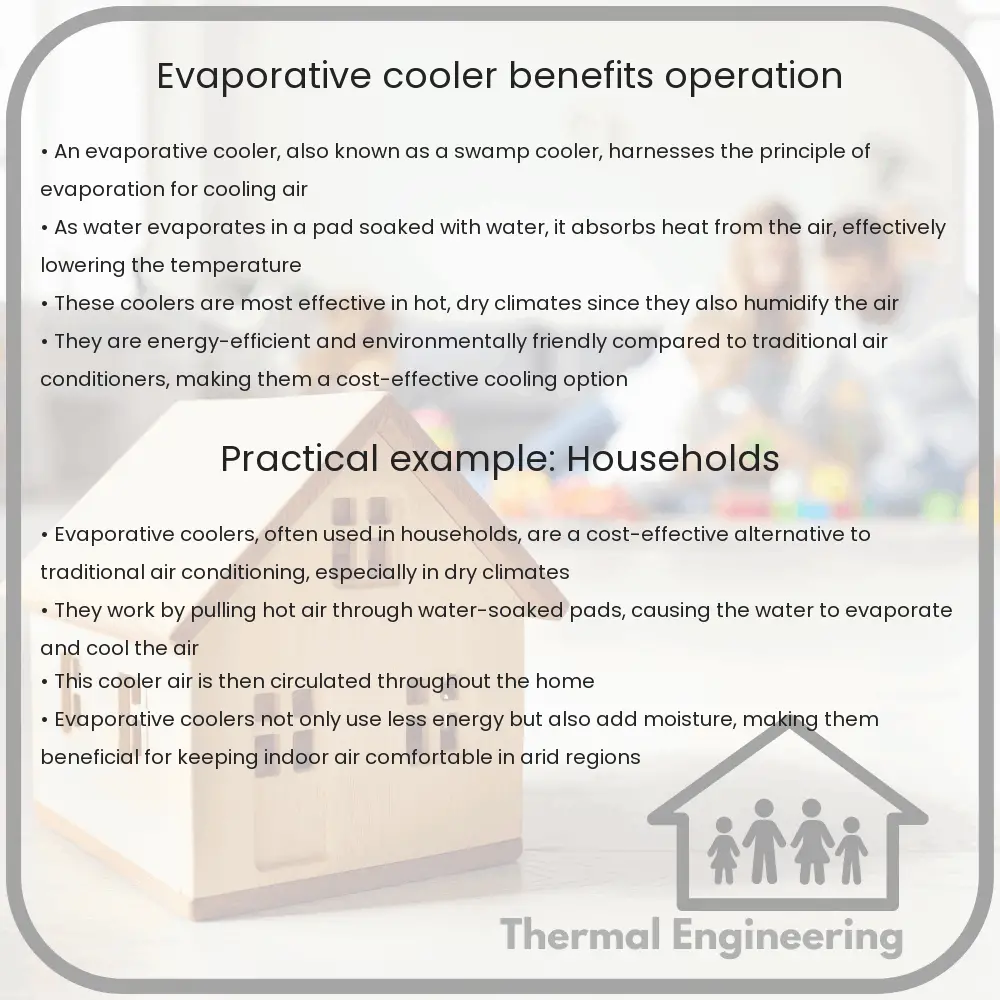Learn about evaporative coolers, their efficient cooling method, practical benefits, and ideal operating conditions.

Understanding Evaporative Coolers: Benefits and Operation
Evaporative coolers, also known as swamp coolers, offer a simple, cost-effective method of cooling indoor spaces. This device operates on the principle of evaporation and is particularly effective in hot, dry climates. In this article, we will explore how evaporative coolers work and discuss their advantages.
How Does an Evaporative Cooler Work?
Evaporative cooling is based on the concept of water evaporation. It involves the process of transforming liquid water into vapor using thermal energy in the air, thereby reducing the temperature of the air.
The central components of an evaporative cooler are:
- Cooling pads: These pads are generally made from wood shavings, cellulose, or other materials that absorb and hold water. As air passes through these wet pads, it cools down.
- Water tank: Holds the water needed to keep the pads saturated.
- Fan: Pulls the hot, dry external air through the moist pads, facilitating the cooling process before circulating the cooled air throughout the space.
- Pump: Circulates water from the tank to the pads.
The operation can be summarized in three steps:
- Water is pumped from the tank to continuously saturate the cooling pads.
- Air is drawn into the cooler through the damp pads where it loses heat as some of the water in the pads evaporates.
- The fan then pushes the cooled air out into the room or designated area, lowering the overall temperature.
Benefits of Evaporative Coolers
Evaporative coolers offer several benefits over traditional air conditioning systems, making them a preferred choice in suitable environments:
- Energy Efficiency: These coolers use significantly less electricity than conventional air conditioners, primarily because they have fewer mechanical components and use water as the cooling medium. This can lead to substantial energy savings, especially in hot, dry climates where they are most effective.
- Cost-Effective: Lower energy consumption translates to lower utility bills. Additionally, evaporative coolers generally have lower installation and maintenance costs.
- Eco-Friendly: Unlike traditional air conditioning systems that utilize refrigerants, which can be harmful to the environment, evaporative coolers use water, making them more sustainable and environmentally friendly.
- Adds Moisture to the Air: Instead of drying out the air like conventional air conditioning, evaporative coolers increase indoor humidity, which can be beneficial in arid climates.
- Simple Maintenance: With fewer mechanical parts than traditional AC systems, evaporative coolers are generally easier and less expensive to maintain.
Optimal Environments for Evaporative Coolers
While evaporative coolers are advantageous under the right conditions, they are not suitable for all climates. They are most effective in areas with low humidity levels, where the air has a higher capacity to absorb water vapor. High humidity conditions inhibit the evaporation process, reducing the cooling efficiency of the device. Therefore, regions with dry air, such as many areas in the southwestern United States, are ideal for evaporative cooling systems.
In conclusion, evaporative coolers provide a cost-efficient and environmentally friendly alternative for cooling spaces in appropriate climates. Understanding the operation and benefits of these devices can help individuals and businesses make informed decisions about their cooling needs, potentially reducing their environmental footprint while staying comfortable economically.